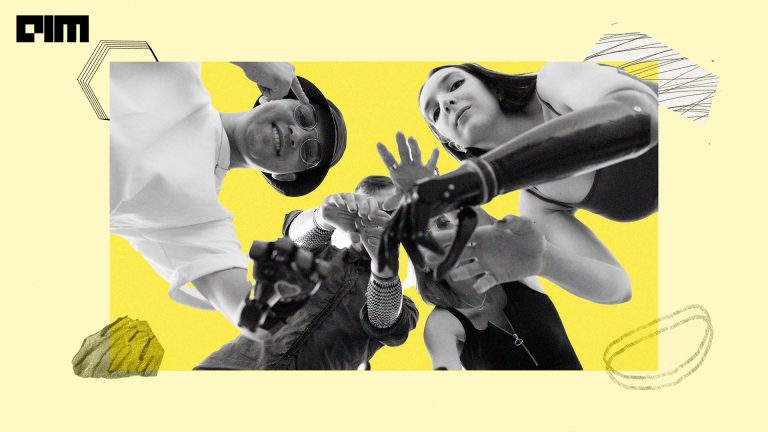|
Listen to this story
|
Melissa Loomis from Ohio, US lost an arm in a terrible accident and her normal life went upside down. But, she had never imagined that one day, with the help of AI, she would be able to get an arm as good as a real one. In 2016, Loomis became the first amputee in the world to feel a sense of touch through a mind-controlled bionic arm. This is often considered one of the biggest events in the history of prosthesis.
The history of prostheses dates back to the Egyptian era when the first functional prosthesis limb was used between 950 and 710 BC. This was the first time when an artificial toe was designed with a mechanism to provide forward propulsion that could actually help a person to move forward. Earlier, prostheses were used for decorative purposes only and had no actual use.
Since then there has been a continuous quest to build a capable replacement to the lost limb. With the power of AI, we have now reached a stage where we can even create a sensory touch on the artificial limb.
Prosthetic arm as good as a real one
Robotic prostheses are based on AI in which the algorithm interprets nerve signals from the patient’s muscles that allows more precise control of the prosthesis.
The modular prosthetic limb provided to Loomis is designed by engineers at APL, through a program funded by the U.S. Defense Advanced Research Projects Agency, known as ‘DARPA’. The prosthetic hand has 26 joints, with which it can curl up to 45 pounds and matches the natural adeptness of a human arm. It weighs about 4 kg, a little more than a human arm. “It represents a major leap forward in prosthetics, as amputees often contend with heavy, uncomfortable, and static replacements”, says Mike McLoughlin, chief engineer of the Research and Exploratory Development Department at APL.
Besides APL, there are other researchers who are also working on it and using AI technology to brain control the limb.
The e-OPRA technology is based on the OPRA implant system. In this system, electrodes are implanted in muscles and nerves inside the amputation stump, and the e-OPRA system then sends signals in both directions between the prosthesis and the brain, mind-controlling the prosthesis.
To simulate the touch sensation, it has force sensors in the prosthetic thumb that are converted into electrical signals which are sent to stimulate a nerve in the arm stump. The nerve leads to the brain, which then perceives the pressure levels against the hand.
“Currently, the sensors are not the obstacle for restoring sensation. The challenge is creating neural interfaces that can seamlessly transmit large amounts of artificially collected information to the nervous system, in a way that the user can experience sensations naturally and effortlessly”, says Max Ortiz Catalan, Associate Professor at Chalmers University of Technology.
These research works give an impression that AI in prosthesis has reached the level where it has solved the problem for millions of amputees.
Why isn’t everyone using it?
All the AI-based technology development in prosthesis applies to upper limbs. It is yet to achieve the breakthrough to reach mind-controlled efficiency for lower limbs.
Besides, the technology is still in an early phase and is being tested in labs on a few select participants. The AI prosthesis research at the University of Michigan depends on a wired connection to a computer. The participants are not allowed to walk away with the arm and strictly use it in the lab condition only.
The researchers observe that the mind-controlled prosthetics require continuously capturing the nerve signal from the peripheral nervous system—nervous system form outside the brain and spinal cord—and feeding the bionic limb. The problem is that the peripheral nerves carry very small nerve signals.
Cost is another factor obstructing the mass adoption of the technology among users. The use of AI in prosthesis increases the cost significantly which in turn reduces the reach of the technology.
There is no doubt that in the last decade, we have come a long way in terms of the AI-based technology development in prosthesis. But, it’d take a while to reach the stage when amputees could get a fully-enabled prosthesis for lost limbs.


















































































